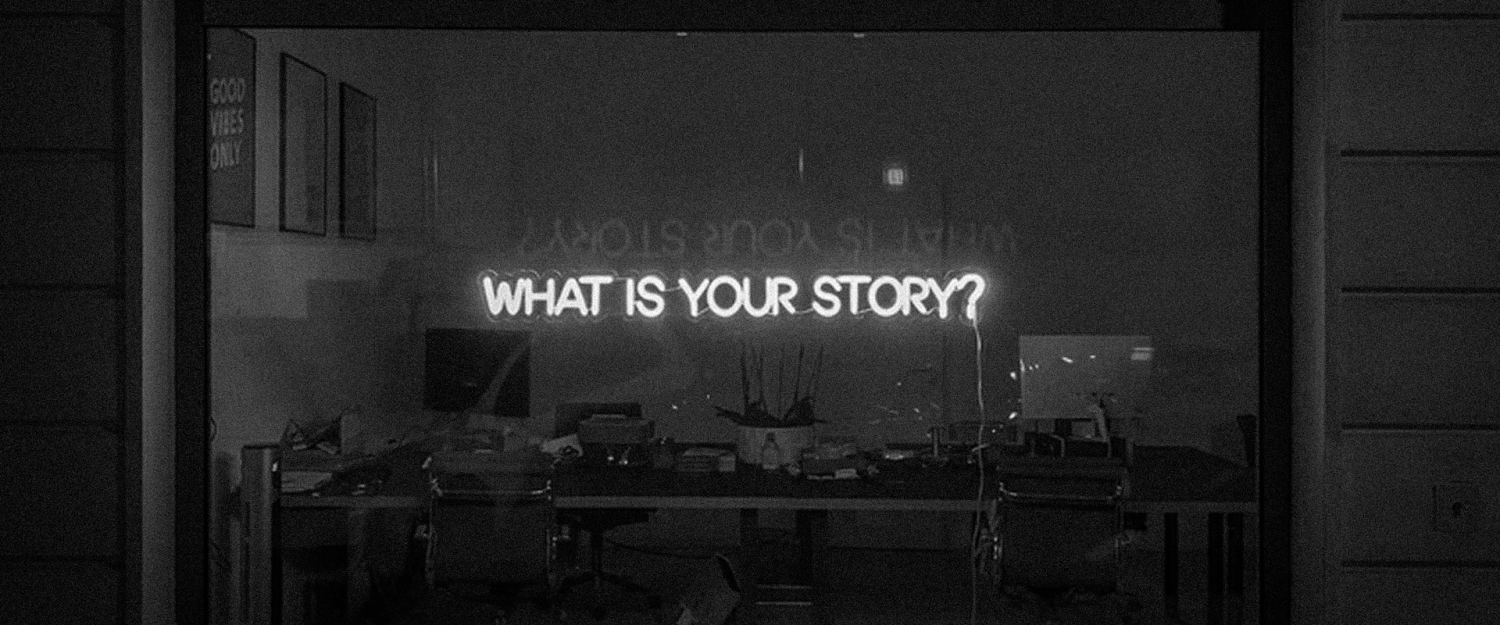The Sahara Desert.
The sun.
Rust.
Dust.
Those crackers you get with soup.
My sense of humour.
These are all infamously dry things.
Yet none of them, I say none of them, even come close to being as dry as a bad blog.
Writing blog posts is hard. Everyone from new writers to seasoned vets can struggle to put together something that is unique, engaging and interesting to read.
“Okay Konrad,” you say impatiently, “I get it, blogs are hard – I’m aware.”
Oh good! But why do you sound so impati…
“Because if I’m here and reading this, I obviously want you to tell me how to actually write a good blog post! Jeeez!”
Fair point.
Okay I could sit here and explain to you the ins and outs of everything you need to do to write a good blog post – but that’s far too easy.
What I’m going to do instead is tell you exactly what NOT to do.
Because I’m fun like that.
Here are some tips and tricks to put some zing in your blog posts and help you to avoid being… meh.
TIP #1: DON’T FORGET WHO YOU’RE WRITING FOR
Have you ever read a blog and been willing to bet a decent amount of money that it was not only written by a robot, but also written expressly for other robots?
Now I’m not sure how big the robot reading market is, but I’m pretty certain it’s not that big.
Humans are social creatures, we like to be acknowledged and actually spoken to. And this is exactly why a good blog post is a conversation, not a lecture.
It’s genuinely surprising how many writers will forget that they’re actually writing for real-life human beings. Even if you’re writing a professional, formal piece, you’re still writing for a living, breathing person with feelings, thoughts, hopes and dreams.
Think back to when you were at school.
Remember how some teachers would just read from the textbook?
You’d be asleep in minutes.
Now think of a teacher that engaged you, asked you questions and made you feel a part of the process.
I bet I can tell which one you learnt more from.
So the next time you’re writing a blog post, take a second to ask yourself “Who am I writing for?” and remember that people want to be talked to, not at.
TIP #2: DON’T TELL POINTLESS STORIES
We all love a good story.
From when we were children – reading stories by torchlight under the covers – right up to adults cosying down with a glass of wine and sticking on the next big BBC drama.
Stories are a fantastic way to engage your audience and leave them wanting to read more.
BUT, that doesn’t mean you should just throw any old story in that doesn’t fit with your narrative.
For example:
“She reached out to pull back the bloodstained curtain, her hand trembling as she gripped the still-damp fabric.
With a surge of fear mixed with adrenaline, she ripped the curtain back to reveal… Nothing.”
Is your software struggling to keep up with the everyday processes of your business?…
Okay sure – intriguing story, I was super involved in that. Though why did she think someone was behind the curtain? This isn’t Scooby-Doo… Wait sorry, back to the point.
Great story – but was it the right way to start a blog post that’s selling software?
Maybe not.
Storytelling is only an effective tool when it’s used in the right way. Feel free to make it implausible, silly even, but at the same time it has to make sense.
Otherwise you’re no better than the fella in his dressing gown and slippers, running around telling everyone the world is about to be eaten by a giant frog – cool story, but it doesn’t quite fit.
TIP #3: DON’T PREACH… TEACH!
Every single thing you write should be done with one explicit aim:
To give your reader value.
You’re letting them in on a trade secret, you’re giving them valuable information that they can utilise, you’re teaching them something they didn’t already know.
These are all things that your blog post should be offering to your reader. And that’s the key word here – “offering”.
A good blog post isn’t just you preaching on and trying to get people round to your way of thinking or your way of doing things. It’s you offering little golden nuggets of value that they can take or leave.
As soon as you start talking down to your reader, or belittling them in any way, they will immediately stop reading.
TIP #4: DON’T HAVE BLOCKY PARAGRAPHS
Honestly, there’s nothing worse than looking at a long stretch of text.
Who has time to read huge paragraphs?! I know I sure don’t.
People nowadays have infamously short attention spans. That’s why every single line you write should entice them to read the next line. You’re almost tricking people into reading your whole blog post.
Sneaky.
Let’s take a look at how this works:
Even if your content is good, if it’s just one big block of text people are far more likely to switch off and not even attempt to read it. That’s why it’s important to space out your paragraphs to keep your reader engaged. Ideally, each paragraph should have no more than three lines of text, and should only contain one thought per sentence. Any more than four lines in a paragraph and it will start to look a bit daunting. You can also use spacing to highlight points. Like this. You can mix up the rhythm of your writing by intertwining short sentences with longer ones. Short ones can be powerful. While long, lyrical sentences can take your reader on a long, winding journey through the echoes of their mind.
Okay be honest, hands up if you didn’t want to read that (my hand shoots in the air).
Now let’s see how this paragraph looks broken up:
Even if your content is good, if it’s just one big block of text people are far more likely to switch off and not even attempt to read it.
That’s why it’s important to space out your paragraphs to keep your reader engaged.
Ideally, each paragraph should have no more than three lines of text, and should only contain one thought per sentence. Any more than four lines in a paragraph and it will start to look a bit daunting.
You can also use spacing to highlight points.
Like this.
You can mix up the rhythm of your writing by intertwining short sentences with longer ones.
Short ones can be powerful.
While long, lyrical sentences can take your reader on a long, winding journey through the echoes of their mind.
Not bad eh?
TIP #5: DON’T WRITE DULL HEADERS OR TITLES
Headers and titles are a great way to hook your reader in.
A good header gives the promise that what’s beneath it is worth taking the time to read.
Though saying that, I personally love dull headers – they’re a great indication that I shouldn’t waste my time reading what’s below.
Harsh – but true.
It takes someone roughly three seconds to decide whether or not they’ll commit to reading something. So if you’re not putting time and effort into your titles, you’re basically screaming: “DON’T READ THIS BLOG”.
For example, which of the titles below seems more enticing to you?
#1: HOW TO WRITE A BLOG
#2: BLOG WRITING 3: THE RE-BLOGGENING
#3: SIX WAYS TO MAKE YOUR BLOGS BURST WITH FLAVOUR
#4: BLOGGY McBLOGFACE: YOUR TICKET TO BEAUTIFUL BLOGS
I’m really hoping you didn’t say the first one…
#2 and #4 catch the eye because – let’s be honest here – they’re funny.
#2 takes a well-known trope of action movie titles whereas #4 plays on the infamous Boaty McBoatface debacle – and who didn’t love that?!
#3 is perhaps the most effective title. It gives the reader a quantifiable number that they can commit to reading and also throws in a bit of visual alliteration – blogs bursting with flavour.
You can almost taste it.
Whatever you come up with may not be to everyone’s taste, but trust me – anything is better than a bog-standard snoozefest header.
BONUS TIP #6: DON’T BE TOO HARSH ON YOURSELF
The final – and maybe most important – tip that I want to leave with you is don’t be too hard on yourself.
Writing good blogs is a long process of trial and error. Some will work, some won’t – it’s a simple fact.
The best thing you can do is to learn from your mistakes.
If you write a blog that doesn’t get much engagement, take the time to reanalyse it. Could you have done anything differently? Could you rewrite it now and make it better? Could you apply any of these tips?
Now get out there and bust out some big, beautiful blogs.
I believe in you champ.
Love you,
Konrad x

